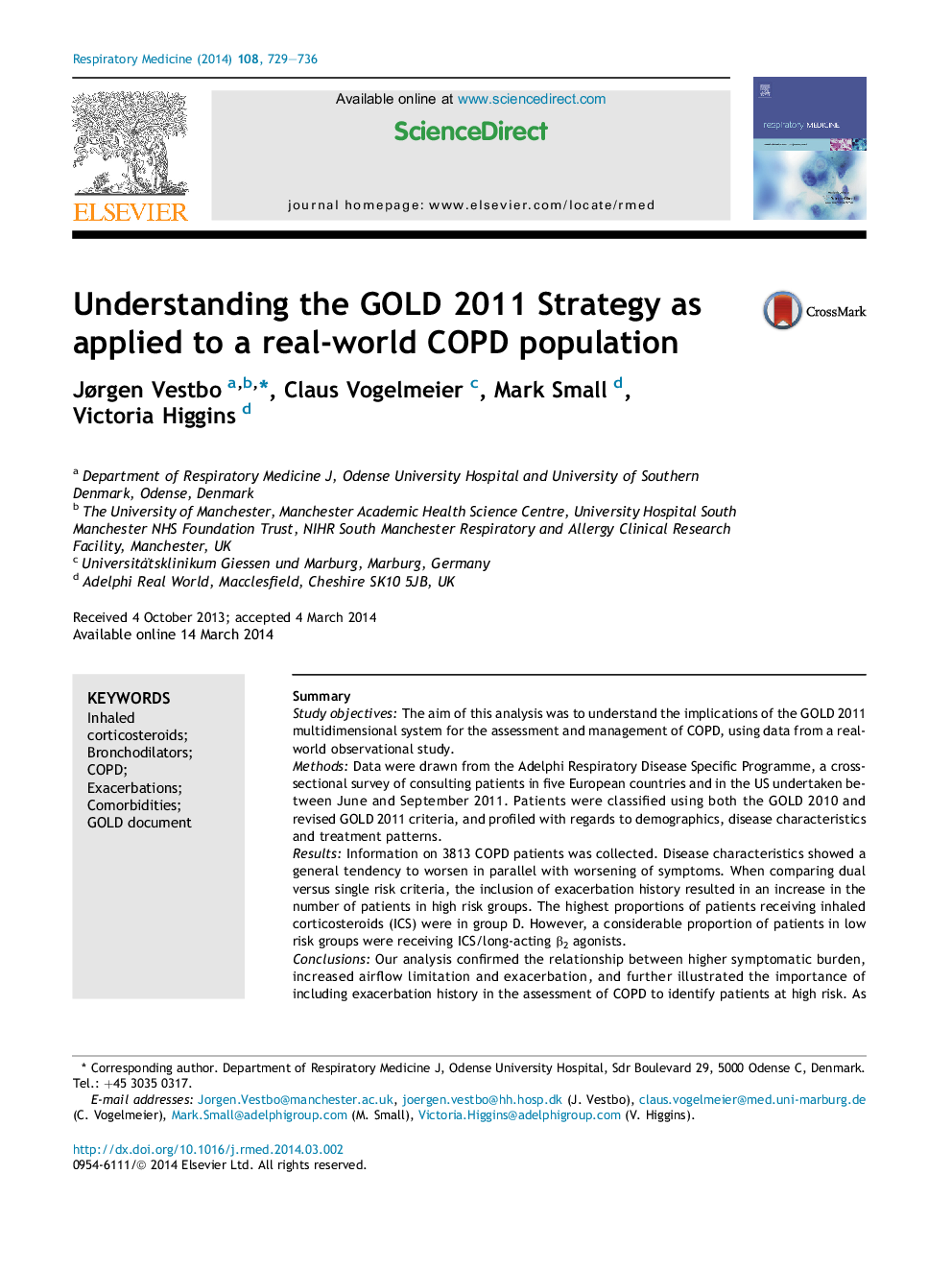| Article ID | Journal | Published Year | Pages | File Type |
|---|---|---|---|---|
| 4210278 | Respiratory Medicine | 2014 | 8 Pages |
SummaryStudy objectivesThe aim of this analysis was to understand the implications of the GOLD 2011 multidimensional system for the assessment and management of COPD, using data from a real-world observational study.MethodsData were drawn from the Adelphi Respiratory Disease Specific Programme, a cross-sectional survey of consulting patients in five European countries and in the US undertaken between June and September 2011. Patients were classified using both the GOLD 2010 and revised GOLD 2011 criteria, and profiled with regards to demographics, disease characteristics and treatment patterns.ResultsInformation on 3813 COPD patients was collected. Disease characteristics showed a general tendency to worsen in parallel with worsening of symptoms. When comparing dual versus single risk criteria, the inclusion of exacerbation history resulted in an increase in the number of patients in high risk groups. The highest proportions of patients receiving inhaled corticosteroids (ICS) were in group D. However, a considerable proportion of patients in low risk groups were receiving ICS/long-acting β2 agonists.ConclusionsOur analysis confirmed the relationship between higher symptomatic burden, increased airflow limitation and exacerbation, and further illustrated the importance of including exacerbation history in the assessment of COPD to identify patients at high risk. As based on data from current clinical practice, this study also highlighted the frequent and potentially inappropriate use of ICS and bronchodilators in patients at low risk of experiencing exacerbations.
